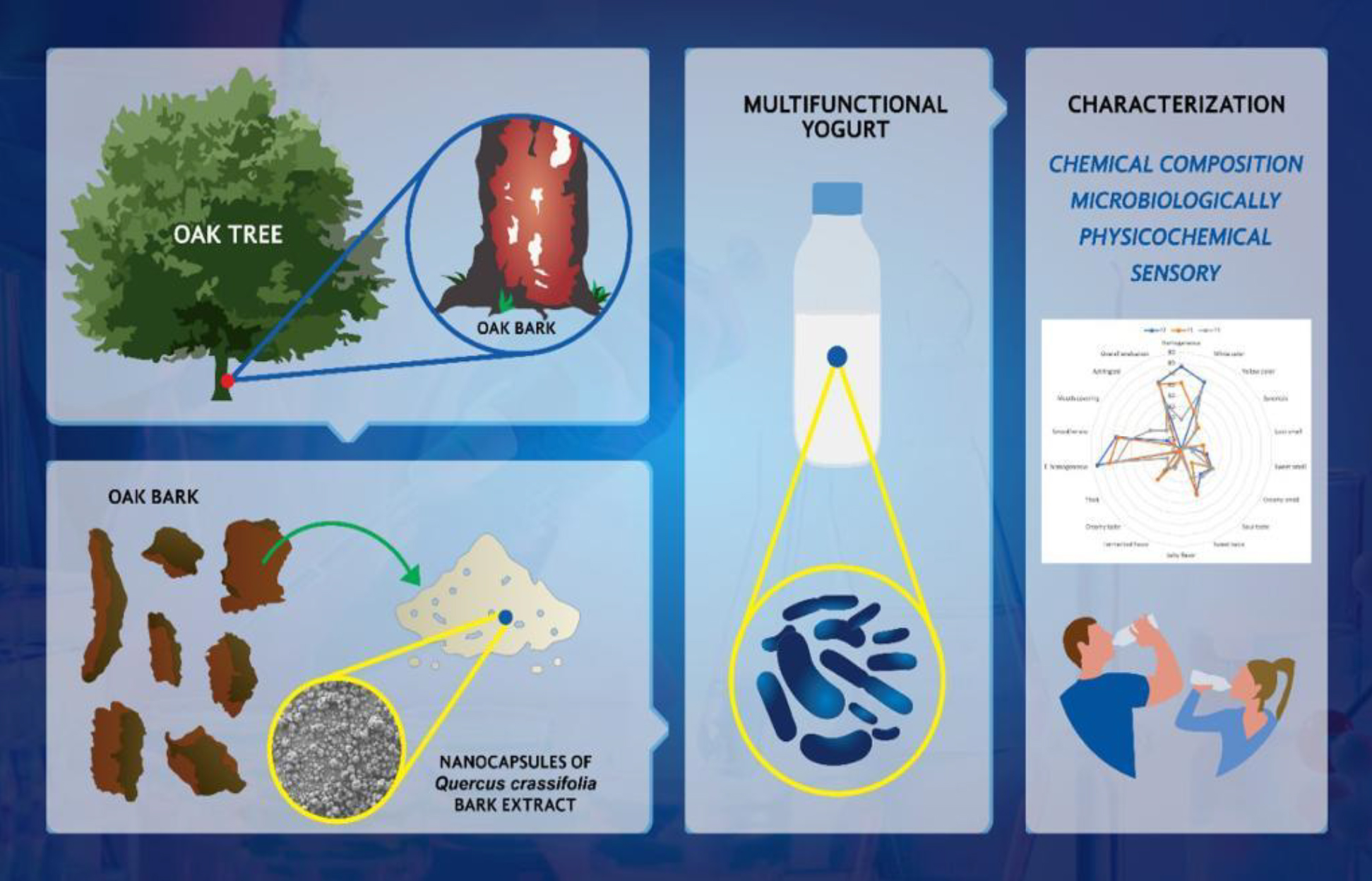Chemical composition, physicochemical evaluation and sensory analysis of yogurt added with extract of polyphenolic compounds from Quercus crassifolia oak bark
DOI:
https://doi.org/10.31989/ffhd.v12i9.951Abstract
Introduction: A diet high in calories and saturated fats has been associated with health problems that have been increasing worldwide. Therefore, it is required to increase the number of formulated foods that generate well-being to health. Yogurt is a widely consumed food by all sectors of the population and it can be used as a vehicle to incorporate bioactive compounds. The phenolic compounds present in forest residues, such as those from oak bark, can be used and incorporated into yogurt, to increase its benefits as a functional food.
Objective: The objective of this study was to develop a multifunctional yogurt enriched with vegetable oil (2.3% w/w) as a source of omega 6 and 3 and adding nanocapsules (24.5% w/w) of an extract of oak bark from Quercus crassifolia, rich in in phenolic compounds and high antioxidant capacity.
Methods: Three yogurt formulations were prepared: F1: yogurt was made with non-fat milk, used as a control, F2: yogurt was prepared with non-fat milk and added with vegetable palm oil, and F3: non-fat yogurt was added with vegetable oil and nanoencapsulated oak bark phenolic extract. The yogurts were characterized in their chemical composition, microbiological analysis, and sensory analysis.
Results: The multifunctional product F3 and product F2 presented lactic acid bacteria in concentration of 3.01X106 and 4.73x106, respectively, preserving characteristics of probiotic food. Product F3 presented low levels of syneresis (7.34%) and it was significantly different from the control yogurt (9.01%). The viscosity increased from 150 cP in the control yogurt to 341 cP in F3, due to the increase in the concentrations of solids by nanoencapsulating the phenolic. The wall material used for nanoencapsulation was sodium caseinate and mantodextrin. However, this increase in viscosity did not affect the sensory evaluation of the product. There were no significant differences between the control yogurt and the F2 and F3 products.
Conclusion: A yogurt added with vegetable oil and nanoencapsulated oak bark phenolic extract was obtained. It was enhanced by the presence of probiotics, bioactive compounds, and essential fatty acids, and then evaluated and accepted by a sensory panel. Nanoencapsulation is a viable alternative to mask the characteristic astringent taste of phenolic compounds because it was not detected by the panelists.

Keywords: waste recovery; functional dairy foods; essential fatty acids; probiotics; antioxidants; sensory.
Downloads
Published
Issue
Section
License
Any manuscripts or substantial parts of it, submitted to the journal must not be under consideration by or previously published in any other journal or citable form. Authors are required to ensure that no material submitted as part of a manuscript infringes existing copyrights or the rights of a third party. In submitting one's article in any form, the author has assigned the FFC publishing rights and has agreed to an automatic transfer of the copyright to the publisher. This is so that the FFC may create print option journals, for example, at the FFC’s discretion. If the author wishes to distribute their works by means outside of the FFC, for example within their community, they will have to place a request.
Correspondence concerning articles published in Functional Foods in Health and Disease is encouraged. While derivative works (adaptations, extensions on the current work, etc.) are allowed, distribution of the modified material is not allowed without permission from the FFC.